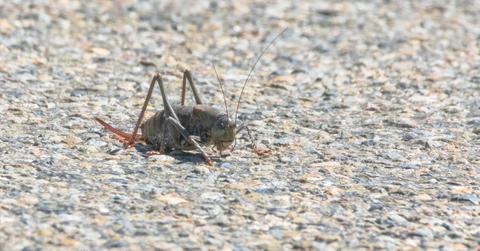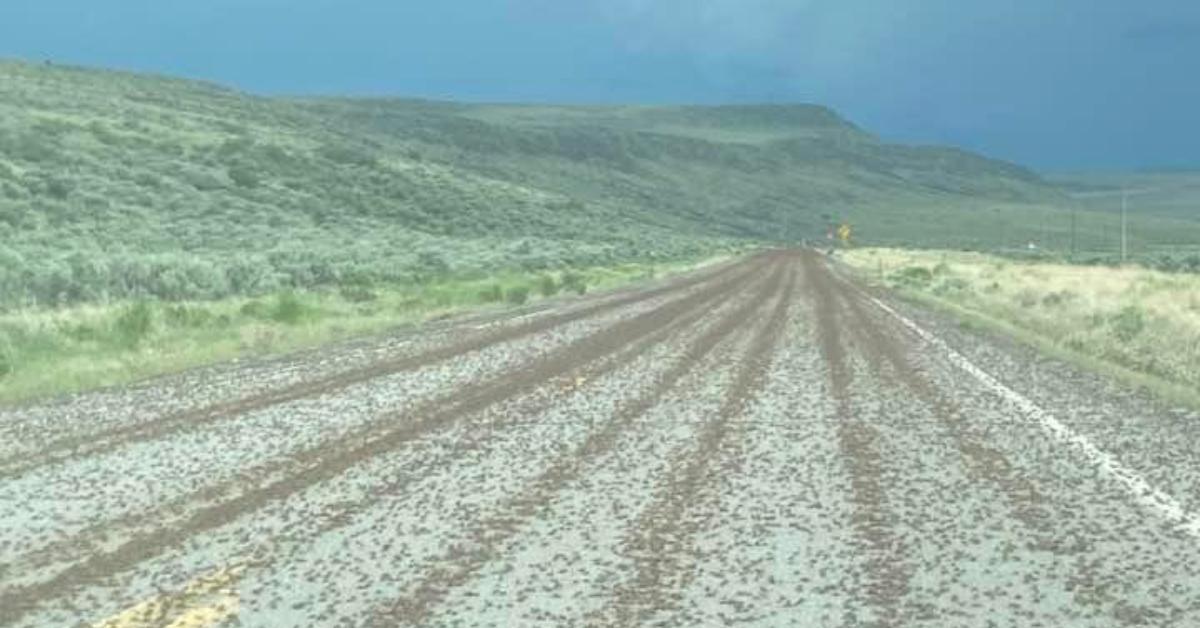Mormon Crickets Invade Nevada: Expert Tips on How to Get Rid of Them
Updated June 13 2023, 3:50 p.m. ET

It could be a scene from a horror film or biblical prophecy. Millions of bugs – Mormon crickets, to be exact – have invaded the streets of Elko, Nevada, and its surrounding counties and are wreaking havoc on the area.
Mormon crickets aren’t crickets but more like flightless katydids whose wings have been replaced with a hard shield. Since they don’t have wings, the Mormon crickets are migrating on foot and eating almost everything in their path, including other Mormon crickets that are dead or dying. Meanwhile, Nevada residents are trying to figure out how to get rid of the Mormon crickets.
Where did the Elko, Nevada, Mormon crickets come from?
Mormon crickets have a four-to-six-year life cycle before they go dormant, and the last dormant period ended in 2019, entomologist Jeff Knight of the Nevada Department of Agriculture, told KSL5 TV in Salt Lake City.
The insects lay their eggs around July, and those eggs usually hatch in the Spring, Knight said. According to the University of Nevada at Reno, drought conditions often encourage Mormon cricket outbreaks. However, Knight adds the wet winter conditions in Northern Nevada this year delayed the insect’s hatching.
“This year we’re really delayed, we didn’t get hatching until mid-April, so the wet winter and the winter we had dictated that,” Knight told KSL5 TV.
Besides being pretty gross and leaving bug poop on everything, the Mormon crickets are causing car accidents. The thousands of bugs getting run over and squished on Nevada roads create a slick layer of bug guts that causes vehicles to slide and get into accidents.
“They get run over, two or three come out and eat their buddy, and they get run over, and the roads can get covered with crickets, and they can get slick,” Knight told KSL5 TV. “The bigger issue is these afternoon thunderstorms, and put a little water on that, and it gets slick. We’ve had a number of accidents caused by crickets.”
The Nevada DOT is using snowplows to remove the mass amount of Mormon crickets and putting sand on the roadways to help prevent cars from sliding on the bug guts.
How can you get rid of Mormon crickets?
Numerous pictures and videos on social media show driveways and homes covered in Mormon crickets. Knight says Mormon cricket infestations usually pass through an area in three to six days. However, if you can’t wait for the insects to leave on their own, here are a few things you can do to get rid of Mormon crickets, as suggested by the University of Nevada College of Agriculture, Biotechnology & Natural Resources.
Create a barricade around your garden - If you have valuable ornamental plants or flower beds you want to protect from destruction by Mormon cricket, you can build a slick barrier around them. The fence or barrier should be 18-24 inches high, and chicken wire covered in sheet plastic should suffice. Mormon crickets can’t walk up a slick, vertical barrier.
Take a preemptive strike - To help prevent another infestation from happening next year, you can take a preemptive strike and kill the Mormom cricket eggs before they can hatch. You can do this in the fall when cleaning up your yard. Turn over or till the solid in your garden to help expose the insect eggs to the elements. Extreme hot and freezing temps will kill the eggs.
Non-chemical insecticide - Traditional insecticides like carbaryl bait or the insect growth regulator Dimilin have been used effectively to eliminate the Mormon crickets. But if you want a solution that’s less harmful to the environment, you could try a non-chemical bait like Perma-Guard Garden and Plant Insecticide (D-21), a diatomaceous earth-based product.
